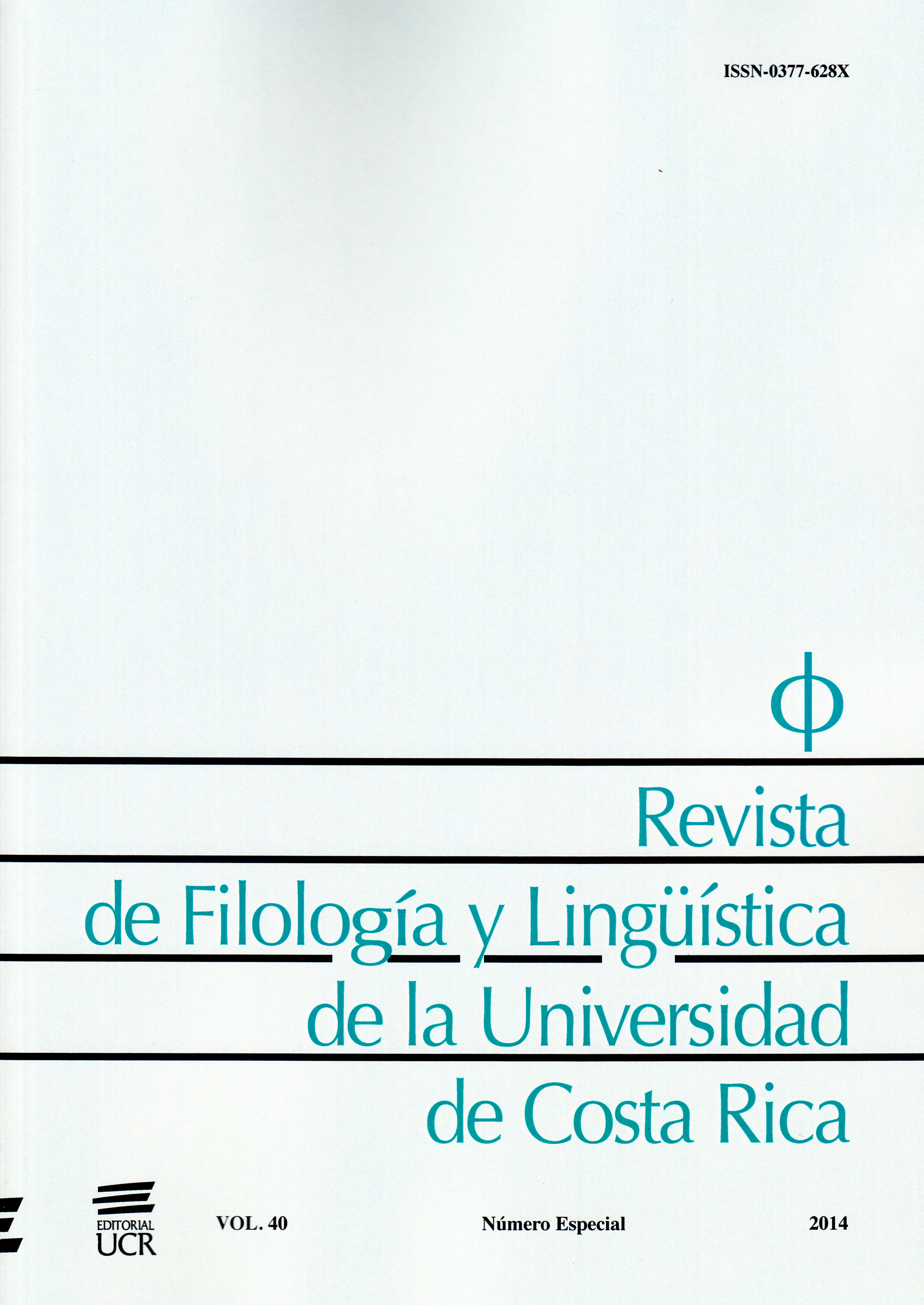Abstract
This article shows the Bribri (Chibchan, Costa Rica) demonstrative system and how it functions in the discursive organization of the Bribri narrative. The concept of deixis as “demonstrative semantic dimension of language”, as Gaínza (1975) did following Karl Bühler’s theory of language, is taken as point of departure. Then, Hanks’ (1992) functionalist proposal on deixis is outlined and applied in the analysis of Sòrbulu, a story of the Bribri oral tradition.
References
Bar-Hillel, Y. (1954). Indexical expressions. Mind. (63), 359-379.
Bertorello, A. (2008). El límite del lenguaje. Buenos Aires: Biblos.
Bühler, K. (2011 [1934]). Theory of language: The representational function of language. Amsterdam: John Benjamins Publishing.
Constenla-Umaña, A. y Margery-Peña, E. (1978). Bribri I. San José: Publicaciones de la Universidad de Costa Rica.
Constenla-Umaña, A., Elizondo-Figueroa, F. y Pereira-Mora, F. (1998). Curso básico de bribri. San José: Editorial de la Universidad de Costa Rica.
Diessel, H. (2012). Bühler’s two-field theory of pointing and naming and the deictic origins of grammatical morphemes [versión digital]. Por: K. Davidse, T. Breban, L. Brems y T. Mortelmans (Eds.). Grammaticalization and Language Change: New reflections. (3750). Amsterdam: John Benjamins. http://www.personal.uni-jena.de/~x4diho/Buehler. pdf. [Consulta: 09 de setiembre de 2014].
Gaínza, L.G. (1975). La mostración lingüística y la autonomía sintáctica. Revista de Filología y Lingüística. 1(1), 45-53.
Givón, T. (1990). Syntax: A Functional–Typological Introduction. (Volume II). Amsterdam/ Philadelphia: John Benjamins Publishing Company.
Goodwin, Ch. & Duranti, A. (Eds.). (1992). Rethinking Context: Language as an Interactive Phenomenon. Cambridge: Cambridge University Press.
Hanks, W.F. (1992). The indexical ground of deictic reference. In: Goodwin, C. and Duranti, A. (Eds). Rethinking Context: Language as an Interactive Phenomenon. (43-76). Cambridge: Cambridge University Press.
Jara-Murillo, C.V. (1993). I tté. Historias bribris. San José: Editorial de la Universidad de Costa Rica.
Jara-Murillo, C.V. (2002). Tipología del orden de palabras en bribri. Revista de Filología y Lingüística. 28 (2), 111-138.
Jara-Murillo, C.V. (2003). Codificación de participantes en una narración bribri. Estudios de Lingüística Chibcha. 22, 33-60.
Jara-Murillo, C.V. y García-Segura, A. (2003). Diccionario de Mitología Bribri. San José: Editorial de la Universidad de Costa Rica.
Jara-Murillo, C.V. y García-Segura, A. (2013). Se' ttö́ bribri ie. Hablemos en bribri. San José: CONARE/E-Digital [http://issuu.com/carlavictoriajaramurillo/docs/].
Payne, T. (1997). Describing morphosyntax. Cambridge: Cambridge University Press. Wilson, J. (1984). Relative clauses in Bribri. Estudios de Lingüística Chibcha. 3, 179-199.

